The Xiaomi Mi 11 is now about to hit the Philippine shores. It’s bringing the first Snapdragon 888 chipset together with more upgrades such as a 120Hz quad curved display, Harman Kardon stereo speakers, and a 108MP primary camera. On paper, it looks like Xiaomi raised the bar high, living up to its bang-for-your-buck standard, but let’s see what it got when it comes to everyday use.
Table of Contents
Design and Construction
Starting with design. The Xiaomi Mi 11 screams premium with its curved Gorilla Glass back and front with a thin metal frame. Even if it’s taller than its predecessor, it still fits the palm well, although people with small hands might prefer to use both to get a better grip. The unit we have is in the Horizon Blue colorway, but you can also opt for the Midnight Gray or the Cloud White variant.
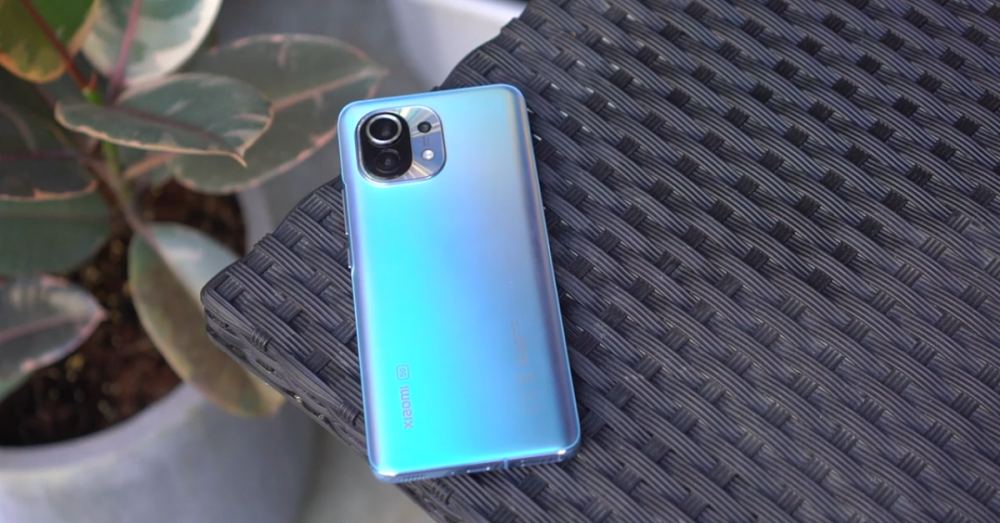
The rear has a matte finish on it, and it is sealed with Gorilla Glass 5. On the upper left is a protruding square with rounded corners triple camera module that’s far from current iPhone camera modules. Below that is some Xiaomi branding.

Upfront, we get an almost bezel-less 6.81-inch WQHD+ AMOLED Dot Display with a 20:9 aspect ratio and an extra sharp pixel density of 515ppi. We get a tiny punch hole notch on the upper left for the front camera, and we also get an under-display fingerprint sensor that’s easy to reach. The screen is protected by the new Corning Gorilla Glass Victus — which is actually two times more scratch-resistant than Gorilla Glass 6 and can survive drops of up to 2 meters. On top of that, it also has a pre-installed screen protector, so thanks for that.
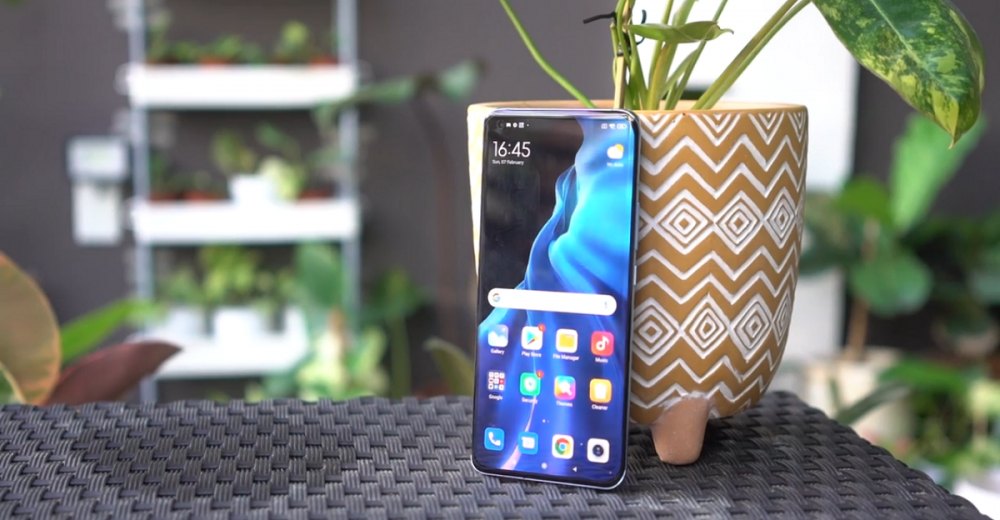
There’s nothing to see on the left side, but on the right are its power button and volume rocker.

Up top is the noise-canceling microphone, together with an IR blaster, and the secondary speakers by Harman Kardon. Looking closely, there’s a Harman Kardon branding embedded beside it.
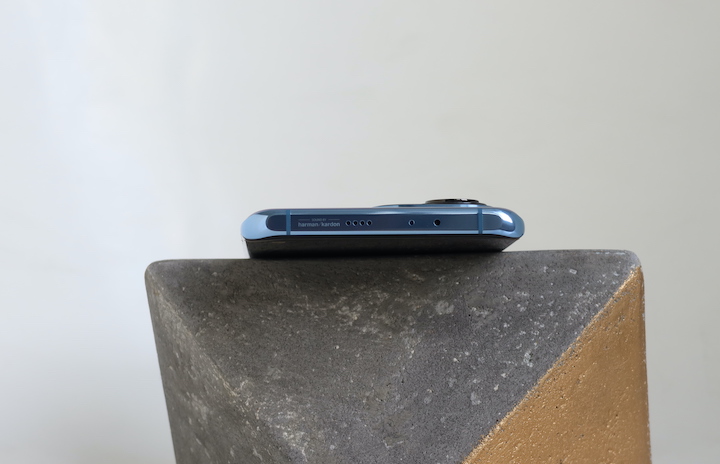
Underneath, we’ll find the Type-C port, speaker grills, primary microphone, and the SIM slot. Inside the slot is a dual SIM tray, both of which are 5G capable. Unfortunately, there’s no microSD card slot here.
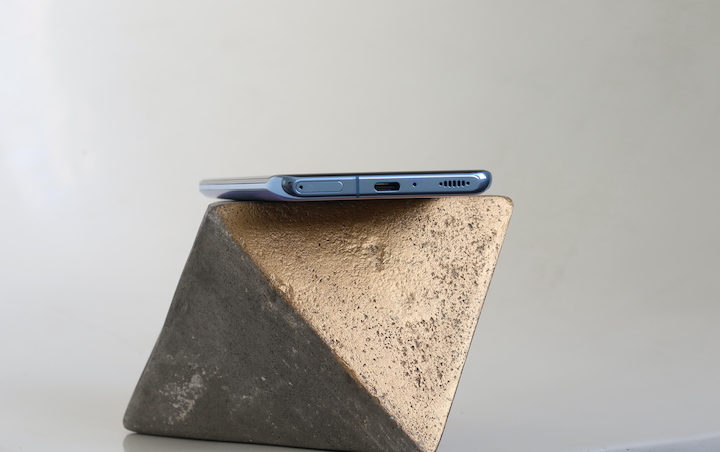
Overall for design, the Mi 11 is charming and high-quality. There’s no doubt that it’s got the most flagship touches, except for an IP rating that we hope to see soon in future Xiaomi smartphones.

If you’re not a fan of glass phones, well, the Mi 11 is also available with an eco-leather back in either a Violet or Gold color.
Display and Media
The Mi 11 sports a stunning 6.81-inch WQHD+ AMOLED screen with a resolution of 3200 x 1440px and a pixel density of 515ppi. It has HDR 10+ support and, of course, that smooth 120Hz refresh rate option. It is an AdaptiveSync display, so once you turn on 120Hz, it will automatically adjust the refresh rate depending on current demand so you can save more battery. Although it has a curved display, we didn’t experience many accidental touches from the sides, and that’s good. If, for some reason, the notch still bothers you, well, Xiaomi always gives you the option to hide it in the settings.

More in the display settings, there’s seriously a lot to tweak around. First, there’s the light mode and the dark mode that can be scheduled if you want to have a dark scheme every night time. Even for the brightness level, it has a Sunlight Mode to adjust the brightness to intense ambient light when automatic brightness is off. The brightness for every time you use night mode is also separated, and it’s something we appreciate.
Other than that, there’s Reading Mode on board, and besides reducing the amount of blue light, it has a Paper mode that gives an additional paper texture for your reading sessions.
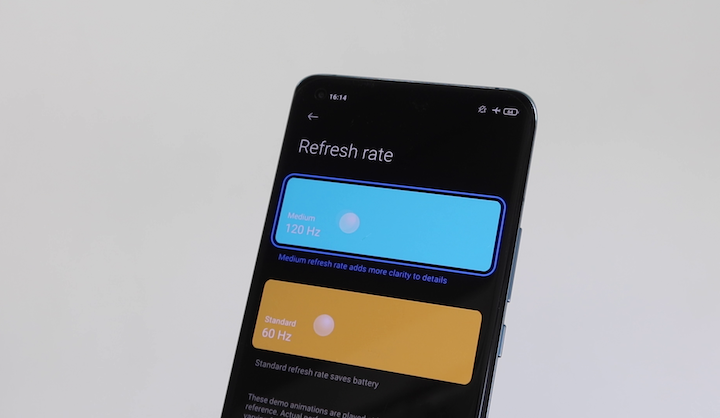
There’s the option to turn on Anti-flicker mode and choose your preferred color scheme. As for the display resolution and refresh rate, you can reduce the resolution to a 1080p display and reduce the refresh rate to the standard 60Hz to save more battery. You can also play additional settings to enhance your photo and video viewing under the AI image engine. The Always-On Display feature is also available, and it is packed with numerous themes that are all customizable.

As for audio quality, it’s actually terrific. Sounds come out well-rounded with a decent amount of bass. It can get loud enough for a medium-sized room, and with Harman Kardon dual speakers, we get rich tones with some slight vibrations that make playing games more exciting. The sound quality can also be customized in the settings under Sound Effects, and you even get additional options once you connect a headset.
Cameras
Now taking a closer look at the camera system. At the rear, its triple camera module is composed of a 108MP main sensor with PDAF and OIS, a 13MP ultrawide, and a 5MP macro lens. Meanwhile, on that tiny notch is a single 20MP shooter.
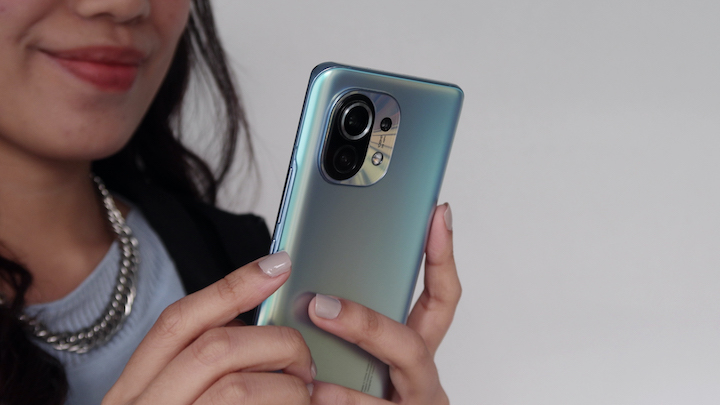
As for other camera features, we get a couple similar to the Mi 10, including Pro, HDR, Portrait, Google Lens, Portrait, and Movie Frame, to name a few. You can even customize the Camera’s interface’s colors and layout and save images in HEIF or high-efficiency image file format, which is nifty.
Quality-wise, images produced by the rear cameras often look sharp, clear, bright with natural-looking colors, and show good dynamic range. When you turn the AI on, it gives a subtle boost that mostly focuses on the vibrance and saturation part. By default, the standard mode gives a nice depth effect, giving those professional-looking photos. However, if you want to bring your camera A-game on then, we suggest using the Pro mode that even allows you to save shots in RAW file formats.
The ultra-wide lens does an excellent job in closely matching the colors as in standard mode. But there can be some fisheye effect sometimes. Nonetheless, this is still highly useful for us. Taking macro shots, on the other hand, can be a hit or miss. But once you get the right focus, you can expect an amicable subject-background separation and high-quality details. So if you may have noticed, there’s no dedicated telephoto lens on the Mi 11, but it does compensate with the 108MP high-resolution lens if you want that digital zoom quality. It is quite a hassle, but if you don’t mind the lower quality, Xiaomi still provided up to 30x zoom on-board.
More on its 108MP shooter, using it produces detailed photos with quality that’s almost identical to the standard mode. It’s still a great feature to have and would probably be useful if you’re going to print your photos in a huge tarp or whatnot. But quite honestly, no matter how much you increase the camera resolution, it doesn’t guarantee that it would look as crisp and clear once it’s uploaded to your social media.
For night photography, here’s what it looks like without the night mode turned on. As you can see, it’s dark and grainy. Now here’s what it looks like with the night mode turned on. It’s not the best since it still looks washed out, but we get a brighter shot with more details. There’s also an auto night mode that you can turn on in the settings to automatically detect low light and produce a better shot. It takes less time to take a shot than the night mode, but the quality is often just as close to each other. If you want to take your night shots to the next level, you can use the Supermoon mode, which’s mainly dedicated to taking fantastic shots of the moon. This feature allows you to zoom in up to 30x.
Selfies, on the other hand, look great under the right lighting conditions. It falls more on cooler tones, with the natural skin tone being retained. Plus, we like that it doesn’t go overboard with the beauty mode on. The portrait mode also has an excellent background to subject separation, and you could even play with the aperture and blur style afterward.
For videos, it’s capable of shooting up to 8K at 30fps; and 4k, 1080p, and 720p at 30 or 60fps. The steady video mode and the steady video pro mode work across all settings, which is great for vlogging. Moreover, it comes with tons of cinematic features that help you create those cool intros with slick transitions. Under Movie Effects, you can play around with fun video quirks such as Magic Zoom, Slow Shutter, Time Freeze, Night Time Lapse, and Parallel World.
OS, UI, and Apps
For software, we get the familiar MIUI 12 on top of Android 11. As we’ve always mentioned in our reviews, MIUI is one of our favorite Android skins. It’s clean and straightforward. We like that it didn’t come with a lot of bloatware. We only get a couple of Xiaomi proprietary apps, as well as some from Google.
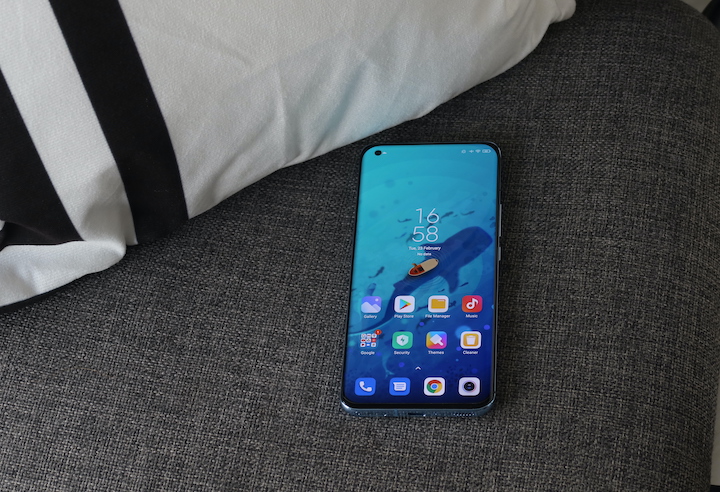
The customization features in the settings can be overwhelming in the right way. By that, we meant almost everything from the home screen to the lock screen could be personalized. You can navigate with gestures or the on-display buttons, and you can also disable the app drawer if you’re not a fan of it. Interestingly, we get the option to use the usual Android drop-down notification and control center format or the newer style that’s a lot similar to the iOS design.
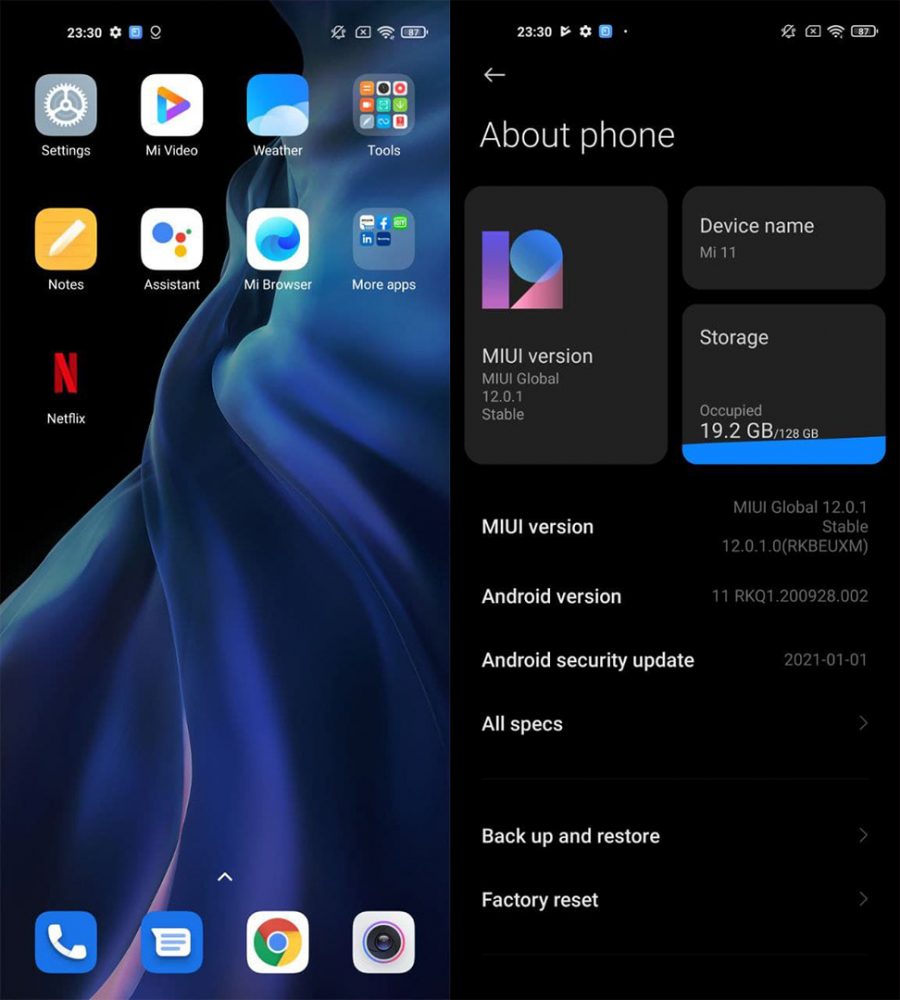
There’s a new Floating Windows feature that can be highly useful for multitasking, and you can easily access it every time you view the recent apps you used. However, it is limited to one floating window, and there are only a few compatible apps that you can use. For other features, it comes with Super Wallpapers, one-handed mode, Dual Apps, App Lock, Digital Wellbeing, Second Space, Video Toolbox, and Lite Mode for less visual clutter.
The unit we received for review comes with 128GB of internal storage, and we get a usable 108GB which should be enough for most users. Unfortunately, it is not expandable via a microSD card.
Performance and Benchmarks
The Mi 11 isn’t just all about display. Performance-wise, it’s impressive. Its Snapdragon 888 processor is paired with an Adreno 660 GPU and 8GB (which we have) or 12GB of RAM. And definitely, we weren’t disappointed with its performance. Launching and loading apps are lightning-fast and are further accentuated with the smooth 120Hz refresh rate. Gaming is a no-brainer as playing graphically intensive games runs smoothly, especially with the Game Turbo support.

For some numbers, take a look at the benchmark scores we got:
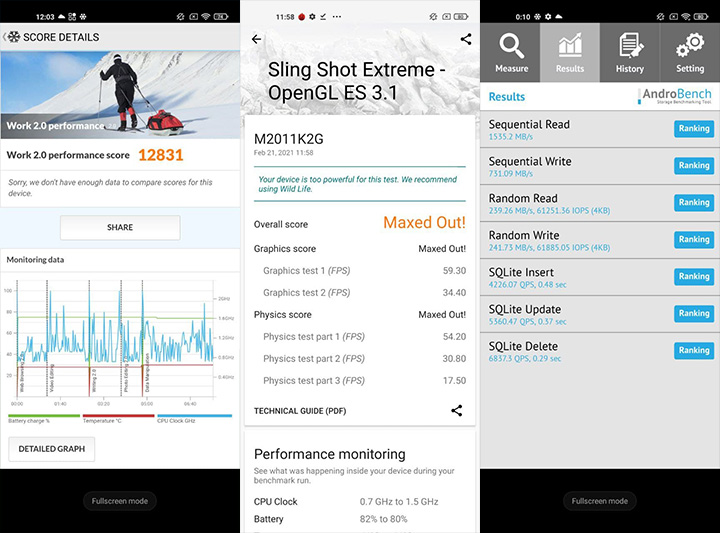
• AnTuTu v8.3.4 – 702,117
• GeekBench 5 – 1,124 (Single-Core), 3,679 (Multi-Core)
• PC Mark – 12,831
• 3D Mark – maxed out (SSE – OpenGL ES 3.1), 5,754 (SSE – Vulkan)
• Androbench – 1,535.2 MB/s (Read), 731.09 MB/s (Write)
Note that while the Mi 11 is equipped with a vapor chamber cooling system, we encountered some occasional heating when running heavy apps for an extended period of use. Nonetheless, it doesn’t get to an alarming hot level. When it comes to security, you can unlock the phone via facial recognition or the under-display fingerprint scanner. There’s nothing new here. Both are reliable and work smoothly and accurately.
Connectivity and Battery Life
Connectivity-wise, the Mi 11 is complete and up-to-date with support for WiFi 6, Bluetooth 5.2, dual-band GPS, NFC, and dual-standby 5G.

Juicing up the device is a 4,600mAh battery that’s a thin lower than the Xiaomi Mi 10, but the upgrade you get is its 55W wired fast charging, 50W wireless, and 10W reverse wireless charging. Charging takes around 45 to 50 minutes from 0 to a full 100%, and if you’re wondering, it does come with a power brick in the box.
We ran it through the PCMark’s Battery test, and the device yielded 10 hours and 2 minutes. Meanwhile, in our standard video loop test, it got a total score of 14 hours and 24 minutes.
Conclusion
There’s no official price yet for the Philippine market as of creating this review, but based on the prices of its predecessors, we can expect it to be priced below PHP 40K. Sure, the Xiaomi Mi 11 has a few drawbacks: the occasional heating, lack of telephoto lens, slightly lower battery capacity, and lack of an IP rating. But there’s still a lot of convincing reasons why you should get this beastly phone.

Besides the stellar performance and outstanding display, you get a good set of cameras, Harman Kardon stereo speakers, and fast wired & wireless charging that’s all sealed in an attractive premium design. It’s one of the best-performing phones you can get to the date, and we do highly recommend it.
With inputs from Justine Basco
Xiaomi Mi 11 5G (Global) specs:
6.81-inch 2K (3200 x 1440) WQHD AMOLED screen, 120Hz refresh rate
Corning Gorilla Glass Victus
Qualcomm Snapdragon 888 SoC
Adreno 660 GPU
8GB RAM
128GB, 256GB
Triple-rear cameras:
• 108MP F1.9 (main)
• 13MP F2.4 (ultrawide)
• 5MP F2.4 (macro)
20MP front camera
Dual-SIM
5G, 4G LTE
WiFi 6
Bluetooth 5.2
NFC
Three-band GNSS, Beidou, GPS, A-GPS, GLONASS, GALILEO, QZSS
USB Type-C
Fingerprint scanner (in-display)
Face Unlock
Harman Kardon-tuned stereo speakers
MIUI 12 (Android 11)
4,600 mAh battery
55W wired, 50W wireless, 10W reverse wireless charging
164.3 x 74.6 x 8.06mm
196g
Horizon Blue, Cloud White, Midnight Gray, Special Edition



















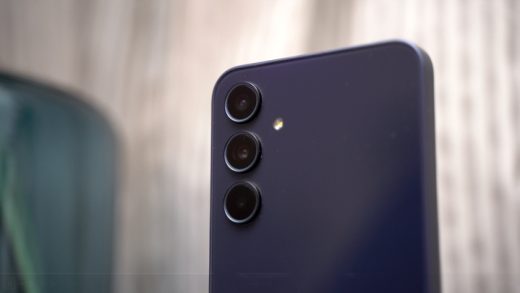





Its price is 37k.
snapdragon 888 is a mess. almost all smartphones with sd 888 experience overheating. I guess wait for phones with next sd flagship or buy phones with sd 870